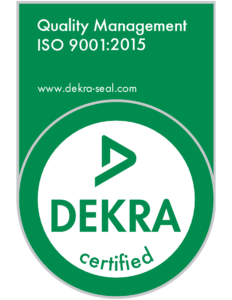When to use Thermoplastics vs. Thermoset Plastics to Make Parts for Welding
The decision to use either Thermoset or Thermoplastics is not as simple as it seems when it comes to welding plastic parts. As the nation’s leading plastic welding experts, Trinetics Group provides expertise to many professionals in the automotive, aerospace, marine, and consumer products industries in reference to which types of plastics are the best choice for their product to use during the ultrasonic welding portion of the manufacturing process.
First, let’s look at the properties of Thermoplastics.
A Thermoplastic is a polymer, which becomes soft when heated and hard when cooled. The benefits to using a thermoplastic material is it can be cooled and heated several times without any change in its molecular chemistry or mechanical properties. Thermoplastics have low melting points are able to be re-melted and remolded and thus the material lends itself very well to plastic welding. Thermoplastics are light weight and usually have a density from .9 to 2 gm/cc.
Thermoplastic material also has a relatively low processing cost and is easy to manufacture quickly in high volumes with high precision. Thermoplastics are hard, good electrical insulators and can resists chemicals. Advantages of Thermoplastics are most commonly used for injection molding. If the decision is made to weld parts, then it is necessary to choose thermoplastic materials.
There are many Thermoplastics that have characteristics similar to thermoset plastics. Some flexible PVCs share characteristics of a silicone or rubber and are able to be ultrasonically welded. Trinetics Group can assist you with finding the right thermoplastic to use when you are considering ultrasonic welding of your product or parts.
The most common forms of thermoplastic polymers are ABS, Acrylic, Polycarbonate, high density polyethylene (HDPE), and PVC or polyvinyl chlorides.
Advantages of Thermoplastics:
- Softens and becomes more fluid as heat is increased
- Highly recyclable since it can be remolded and reshaped
- Can be remolded and recycled without affecting the materials physical properties
- High strength lightweight material
- Shrink and impact resistant
- Easy to manufacture with high volume, precision and low processing costs
- Can be used in low stress or high stress applications
- Flexibility and elongation of the coating film
- Ability to withstand corrosive materials and environments
- Able to carry materials of extreme cold or hot temperatures
- Can encapsulate rigid objects for electrical insulation and equipment
- Extremely adhesive to metal
- Can be used for packaging
- Chip resistance
- Superior finishes
Disadvantages of Thermoplastics:
- Has a relatively low melting point.
- May soften when reheated
- Can melt when exposed to the sun for extended periods
- Poor resistance to organic solvents, hydrocarbons, and highly polar solvents
- Susceptible to creep under exposure to long-term stress loads and lower melting point
- Can fracture instead of being deformed under high stress conditions
- Can be more expensive than thermoset
Now, let’s review the properties of Thermoset plastics.
Creating product parts using Thermoset resins is a permanent exothermic chemical reaction. Thermoset plastics use a curing agent induced by heat or radiation at high pressure that forever changes the plastic. This means the resin creates heat and gases as they cure. Once the phase change or curing reaction takes place the part is complete, and it will always remain in a permanent solid state. Thermoset plastics cannot go back to a molten state.
All thermoset resins such as two-part epoxies, rubbers, and silicones cannot be re-melted.
For all of these reasons, Thermoset plastics are not possible to ultrasonically weld. Thermosets tend to be better suited for casting or extruding parts.
The most common forms of thermosetting plastics are epoxy resin, polyester resin, silicone, santoprene, and other rubbers. Trinetics Group ultimately does not recommend using Thermoset plastics to ultrasonically weld parts.
Advantages of Thermoset plastics:
- Thermal stability – Retain strengthens and shape even when heated
- Have high melting points without the loss of structural integrity
- Not affected by additional heat exposure
- Resistant to chemicals, corrosion and mechanical creep
- Require tight tolerances
- Excellent strength-to-weight characteristics
- Structural integrity – outstanding dielectric strength
- Well suited to the production of permanent components and large, solid shapes
- Lower tooling and set up costs
- Reduced production costs when replacing metal components
- Available molded-in tolerances
- Choice of color and surface finishes
- Low thermal conductivity and microwave transparency
Disadvantages of Thermoset Plastics:
- Cannot be remolded or heated after the initial forming
- Low tensile strength and ductility require designs with thick walls
- Compounds used are reactive systems and can impact shelf life
- Bach processes may exhibit greater variations and less consistency from lot to lot.
- High level of some filler materials may result in excessive tool wear
- Product quality is dependent upon the degree of crosslinking during the molding cycle
- Difficult to weld ultrasonically
Information about Joining plastic parts using ultrasonic welding
When Trinetics Group welds plastic parts using one of our many different methods, we create the correct amount of heat from our industry leading Dukane equipment to melt the plastic on the two halves of the plastic part. The molten plastic flows and creates a molecular level bond between the two parts. Often, you cannot even see where either plastic was before. The flow of the materials from each half of the thermoplastic parts interact with one another so strongly that we are able to achieve approximately 80 to 100% parent material strength in the weld. This is why it is critical to find the best plastic polymer for your specific part or product.
The ultimate decision of which type of plastic to use in welding your plastic parts can make your manufacturing process less stressful in the end and lead to better outcomes and results. If you have any questions the differences between thermoset and thermoplastics, contact Trinetics Group at 321.622.8485 or email info@trineticsgroup.com for more information.

